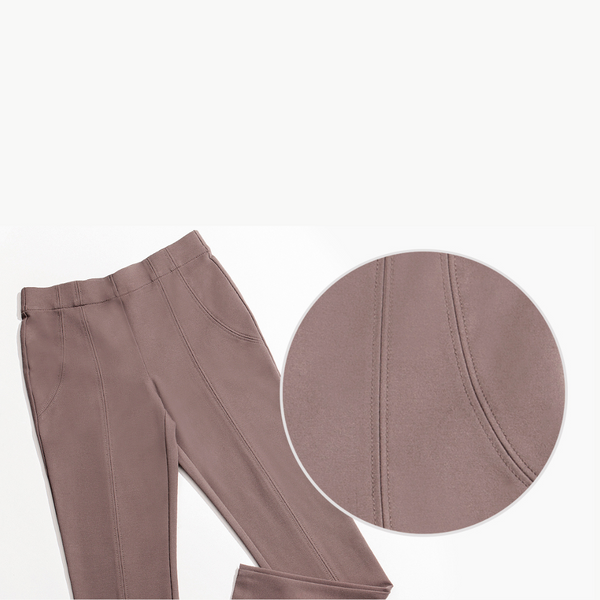
The Evolution of Women in Pants: A Fashion Revolution

The history of women wearing pants is a fascinating journey through fashion, politics, and societal norms. From its modest beginnings to the diverse array of styles available today, the evolution of women's pants reflects broader changes in gender roles and cultural attitudes. Let’s take a trip through time to explore how this revolutionary garment has shaped and been shaped by women's lives.
The Early Beginnings: The 19th Century
Women wearing pants might seem like a modern phenomenon, but its roots go back much further than many might expect. In the 19th century, women’s trousers began to emerge, though they were far from mainstream. Early examples include bloomers, named after Amelia Bloomer, a women’s rights advocate who promoted them in the mid-1800s. Bloomers were loose-fitting trousers that gathered at the ankle, worn under a dress or skirt. They were part of a broader movement toward more practical and comfortable clothing for women.
Though controversial and often met with ridicule, bloomers represented a significant step towards the acceptance of pants as a legitimate option for women. They were practical for physical activities and aligned with the growing feminist movement advocating for women's rights and freedoms.
The 20th Century: Breaking Boundaries
The 20th century saw further evolution and acceptance of women’s pants, driven by changing attitudes and societal needs. The 1920s brought about a fashion revolution with the rise of the flapper dress, but alongside it, women began wearing trousers in informal settings. This era saw the introduction of women’s slacks and wide-legged trousers, thanks in part to influential figures like Marlene Dietrich and Katharine Hepburn, who popularized the look in Hollywood.
The 1940s and World War II played a crucial role in normalizing pants for women. As women entered the workforce in unprecedented numbers, practical clothing like trousers became essential for labor-intensive jobs. This period marked a significant shift, as pants began to be accepted as everyday wear rather than solely for specific activities.
The 1960s and 1970s continued this trend with the rise of fashion icons such as Diane von Furstenberg and the introduction of the jumpsuit. Pantsuits became emblematic of women’s empowerment, symbolizing their increasing presence in professional and public spheres. This era also saw the popularization of jeans, which became a staple in women's casual wear and a symbol of rebellion and youth culture.
The Modern Era: Diversity and Inclusion
Today, women’s pants come in an astonishing variety of styles, reflecting a broad spectrum of tastes, needs, and cultural influences. High-waisted trousers, leggings, skinny jeans, palazzo pants, and cargo pants are just a few examples of how diverse the options have become.
High-Waisted Trousers:
These offer a flattering silhouette and often feature structured lines, making them ideal for both professional settings and casual outings. They hark back to vintage styles while embracing contemporary fabric innovations.
Leggings and Jeggings:
Embracing comfort and flexibility, these garments have become ubiquitous in casual fashion. They are versatile, working well for exercise, casual wear, and even layered under skirts and dresses.
Skinny Jeans:
Popularized in the 2000s, skinny jeans are a staple in many wardrobes. Their sleek, body-hugging fit offers a modern, stylish look that pairs well with a variety of tops and shoes.
Palazzo Pants:
These wide-legged pants offer a breezy, elegant option for warmer weather. Their flowy design provides both comfort and sophistication, suitable for both casual and formal occasions.
Cargo Pants:
Initially designed for military use, cargo pants have been adapted for fashion, with functional pockets and a relaxed fit making them a trendy choice for everyday wear.
The Future of Women’s Pants
The evolution of women’s pants is far from over. As fashion continues to evolve, we can expect to see even more innovations and adaptations. The future may bring more eco-friendly materials, inclusive sizing, and designs that blend functionality with high fashion. Technology, such as smart fabrics and sustainable practices, will likely play a crucial role in shaping the next generation of women’s trousers.
Women’s pants have come a long way from their early origins, reflecting broader societal changes and the ongoing quest for comfort, practicality, and self-expression. From bloomers to high-fashion trousers, this evolution mirrors the dynamic and ever-changing landscape of women’s rights and fashion. The choice of styles available today underscores the importance of personal expression and the ongoing journey towards gender equality and sartorial freedom.
So next time you slip into a pair of Thalian pants, remember that you’re participating in a long and storied tradition—a testament to the power of fashion to challenge norms and redefine possibilities.



